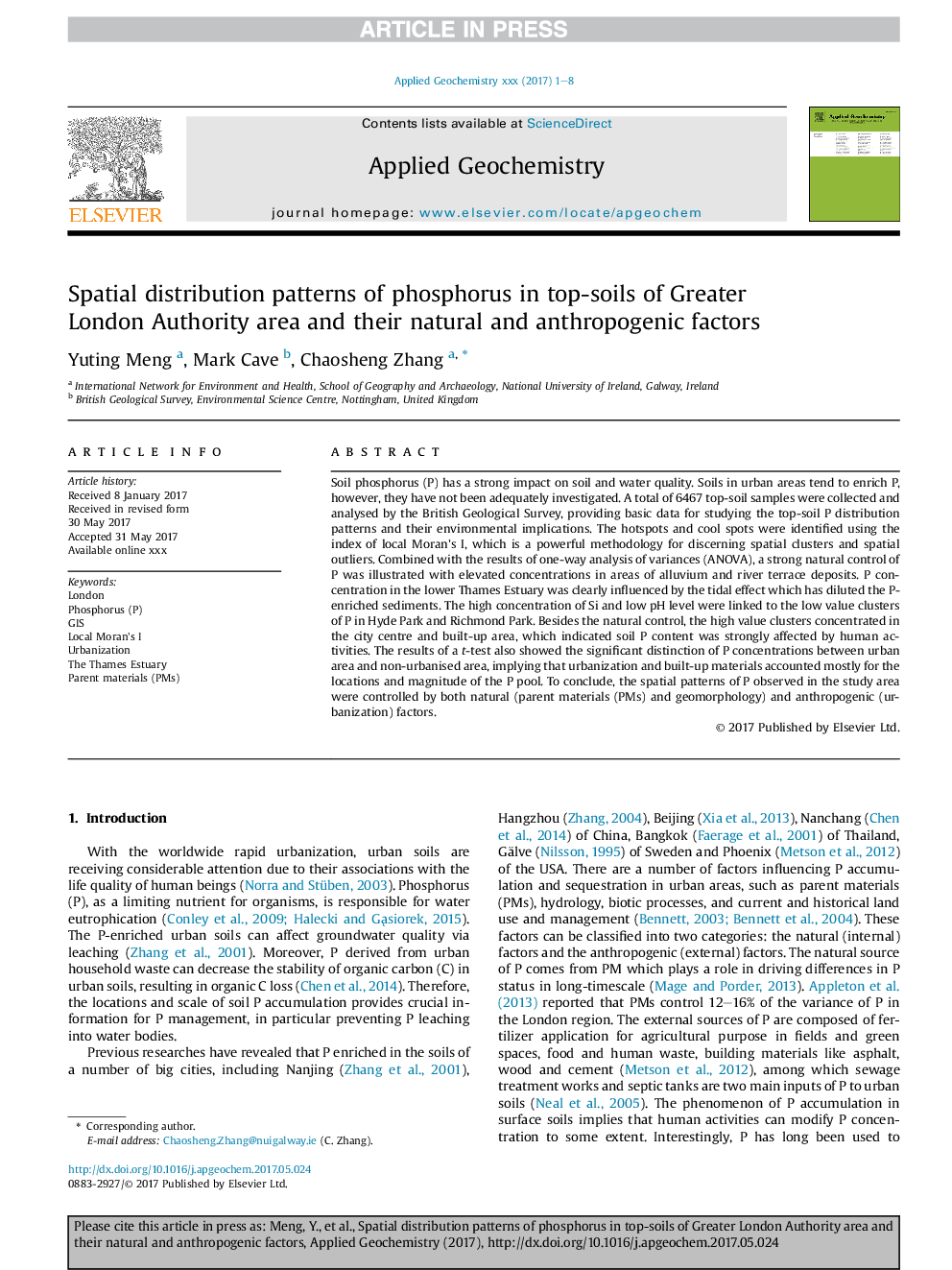| کد مقاله | کد نشریه | سال انتشار | مقاله انگلیسی | نسخه تمام متن |
|---|---|---|---|---|
| 8863227 | 1620203 | 2018 | 8 صفحه PDF | دانلود رایگان |
عنوان انگلیسی مقاله ISI
Spatial distribution patterns of phosphorus in top-soils of Greater London Authority area and their natural and anthropogenic factors
ترجمه فارسی عنوان
الگوهای توزیع فضایی فسفر در خاک های بالا منطقه لندن بزرگ و عوامل طبیعی و انسان شناسی آنها
دانلود مقاله + سفارش ترجمه
دانلود مقاله ISI انگلیسی
رایگان برای ایرانیان
کلمات کلیدی
موضوعات مرتبط
مهندسی و علوم پایه
علوم زمین و سیارات
ژئوشیمی و پترولوژی
چکیده انگلیسی
Soil phosphorus (P) has a strong impact on soil and water quality. Soils in urban areas tend to enrich P, however, they have not been adequately investigated. A total of 6467 top-soil samples were collected and analysed by the British Geological Survey, providing basic data for studying the top-soil P distribution patterns and their environmental implications. The hotspots and cool spots were identified using the index of local Moran's I, which is a powerful methodology for discerning spatial clusters and spatial outliers. Combined with the results of one-way analysis of variances (ANOVA), a strong natural control of P was illustrated with elevated concentrations in areas of alluvium and river terrace deposits. P concentration in the lower Thames Estuary was clearly influenced by the tidal effect which has diluted the P-enriched sediments. The high concentration of Si and low pH level were linked to the low value clusters of P in Hyde Park and Richmond Park. Besides the natural control, the high value clusters concentrated in the city centre and built-up area, which indicated soil P content was strongly affected by human activities. The results of a t-test also showed the significant distinction of P concentrations between urban area and non-urbanised area, implying that urbanization and built-up materials accounted mostly for the locations and magnitude of the P pool. To conclude, the spatial patterns of P observed in the study area were controlled by both natural (parent materials (PMs) and geomorphology) and anthropogenic (urbanization) factors.
ناشر
Database: Elsevier - ScienceDirect (ساینس دایرکت)
Journal: Applied Geochemistry - Volume 88, Part B, January 2018, Pages 213-220
Journal: Applied Geochemistry - Volume 88, Part B, January 2018, Pages 213-220
نویسندگان
Yuting Meng, Mark Cave, Chaosheng Zhang,
